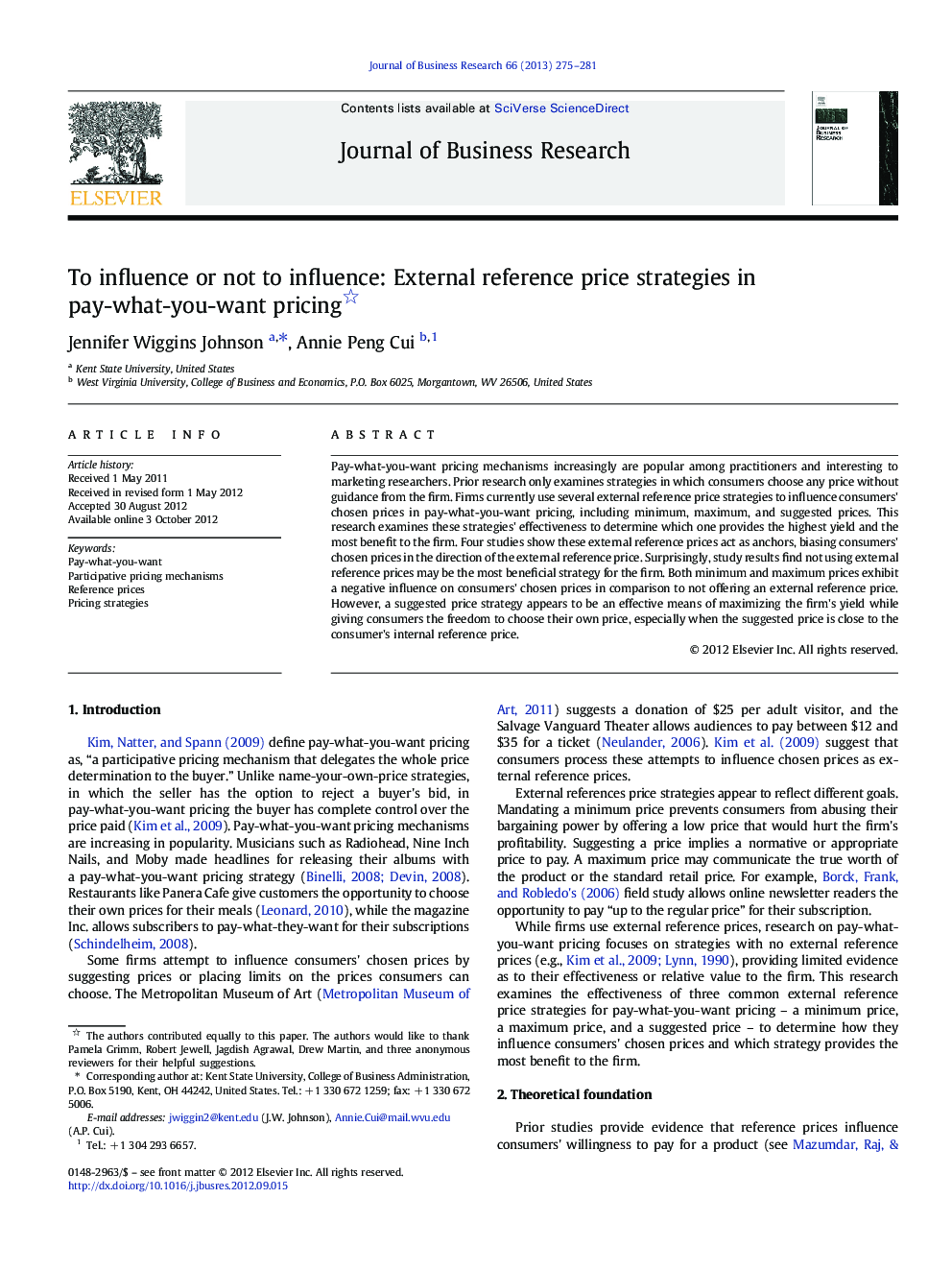| Article ID | Journal | Published Year | Pages | File Type |
|---|---|---|---|---|
| 10493106 | Journal of Business Research | 2013 | 7 Pages |
Abstract
Pay-what-you-want pricing mechanisms increasingly are popular among practitioners and interesting to marketing researchers. Prior research only examines strategies in which consumers choose any price without guidance from the firm. Firms currently use several external reference price strategies to influence consumers' chosen prices in pay-what-you-want pricing, including minimum, maximum, and suggested prices. This research examines these strategies' effectiveness to determine which one provides the highest yield and the most benefit to the firm. Four studies show these external reference prices act as anchors, biasing consumers' chosen prices in the direction of the external reference price. Surprisingly, study results find not using external reference prices may be the most beneficial strategy for the firm. Both minimum and maximum prices exhibit a negative influence on consumers' chosen prices in comparison to not offering an external reference price. However, a suggested price strategy appears to be an effective means of maximizing the firm's yield while giving consumers the freedom to choose their own price, especially when the suggested price is close to the consumer's internal reference price.
Related Topics
Social Sciences and Humanities
Business, Management and Accounting
Business and International Management
Authors
Jennifer Wiggins Johnson, Annie Peng Cui,
